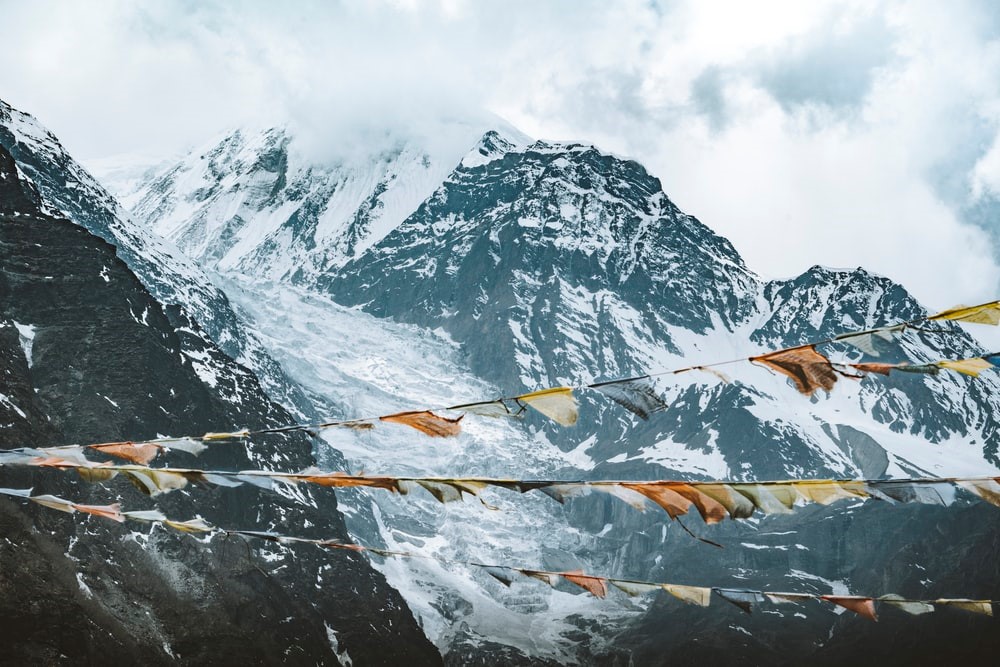
Correspondence between Neelam Singh (student at National Law University – Delhi) and Andema Muniali Armand (chercheur, Sciences de l’Environnement à l’Université Catholique de Bukavu)
Dear Andema,
You might have heard that a glacial lake recently burst in the State of Uttarakhand, one of the states in the Himalayan region. When I proposed this topic, I had come across a news article according to which the Archaeological Survey of India had, for the first time, approved an expedition to study the Ram Setu or Adam’s bridge. This made me curious about the possibility of ecological damage whenever humans come into contact with nature that is still untouched or has not witnessed human interference before. In India, we have many laws to address issues concerning the environment. However, this legislation does not appear to be working as well as many of us would like. There is always scope for improvement, as is also the case here!
In the Himalayan region, there are many towns that have been built on rivers, and these are all old towns which were settled when the population was much smaller. Many houses, hotels or other buildings are situated very close to the river. It seems that they are even hanging over the river. Almost every year, we witness heavy rainfall in Northern India and these rivers become wild, overflowing and wreaking havoc on whatever comes to be in their way. We had a flood in 2013. We had another flood-like situation in some parts of a river parallel to that one, in the same region that witnessed the floods in 2013. Although, this time, there was no damage caused to residential areas, but it did damage ongoing dam construction projects and took the lives of many. The 2013 flood swept away buildings (many of them were houses), agricultural land alongside the river and whatever else was in its way. The ‘melting Himalayan glaciers-Glacial Lake Outburst Floods (GLOFS)’ is a silent time bomb and we don’t even know how much time is left on the timer. It is only natural that when these glaciers melt and these glacial lakes burst that damage will be caused to everyone and everything that lies along the course of the rivers, equally in the plains and the hilly terrain.
In light of the natural landscape of Northern India, no infrastructure should be allowed to be constructed right next to the river. But it is not uncommon to see a hotel next to the river, boasting a riverside view as its selling point. Places like these are one of the first to be affected by floods. Every time the rivers swell, damage is most certainly caused to life and property. In addition to the swelling of rivers, the silt from these rivers is in high demand. This river silt is very frequently transferred from its rightful place in and around the river. This negatively affects the course of the river and ultimately nearby homes.
We need to give nature breathing space; for example, instead of venturing into natural habitats which should be left for other living organisms to thrive, we should find ways to improve our technology so that we all can manage with those portions of the planet we have reserved for ourselves, excluding the wild animals and plants from all the urban and rural areas.
It is now, more than ever, important to invest in technologies that are pro-nature and reduce our carbon footprint, in addition to ensuring that the infrastructure built is safe for everyone, including nature. Sustainability is the key. The SDGs (Sustainable Development Goals) are certainly helpful in this matter. If we all managed to attain the SDGs, we could ask for nothing better. In addition, Environment Impact Assessment (EIA) should be a prerequisite for any infrastructure project anywhere in the world, and it should not just be for the sake of conducting EIA, but to ensure that no project is undertaken if the result of the assessment is negative. There is no doubt that infrastructure development is needed everywhere, but we must not forget that we need to cater to the needs of nature as well, for it is only nature that nurtures us.
I would like to know what you think about possible ways to better address the issue based on your study of ecology and management of aquatic ecosystems.
Looking forward to your response.
Regards,
Neelam Singh
18-FEB-2021, Delhi
Chère Neelam
J’ai lu avec beaucoup d’attention votre essai. Je vous assure que j’ai trouvé votre analyse suffisamment objective dans la mesure où, tout d’abord, vous avez abordé une question d’actualité en maîtrisant son milieu. J’ai apprécié le fait que vous ayez annoncé un risque imminent et négligé alors que des catastrophes se sont manifestées en 2013 dans la même région. En outre, vous ne vous êtes pas limitée à annoncer le danger mais vous avez pris soins de proposer une solution pour prévenir le pire et alerter la communauté.
Je me permets de souligner que, même si je me suis documenté sur le milieu et le danger qui guette la population, il se trouve que je peux aborder la question avec certaines réserves que je vous prie d’admettre. Dans les lignes qui suivent, nous présenterons en résumé les éléments nécessaires pour aborder la question de la fonte des glaciers de l’Himalaya et de l’inondation des lacs glaciaires constituant une bombe à retardement.
Avec la succession des dommages enregistrés dans la région, dans les dix dernières années, la population devrait déjà éviter d’habiter les zones à risques, mais aussi les États devraient déjà s’impliquer de manière urgente dans la prise en compte d’un danger imminent : l’inondation. Malheureusement, il se trouve qu’il y a un problème d’information dans la communauté. Pour décourager les habitants de construire ou de loger dans des zones à risque majeur, il est recommandé de proposer une formation à l’environnement en vue d’instruire la communauté sur les dommages qui attendent ceux qui sont exposés à la bombe à retardement dont il est question.
Comme de nombreuses infrastructures ont été installées dans la région, l’idéal serait de déplacer toute la population exposée, malheureusement cela doit impliquer des budgets colossaux. Néanmoins, certaines mesures peuvent être mises en œuvre pour préparer la population à une éventuelle inondation. Tout d’abord, la sensibilisation aux mesures nécessaires pour prévenir ou réduire les impacts négatifs de ce problème.
Pour une bonne gestion des écosystèmes aquatiques de cette région, un système de gestion des risques et des catastrophes doit être mis en place s’il n’existe pas encore, ou doit être renforcé s’il existe déjà. En outre, la législation en matière d’écosystèmes aquatiques se doit d’être revue et enrichie et elle doit prendre en considération la question des constructions en bord de rivières.
Les études scientifiques approfondies deviennent alors nécessaires pour produire des connaissances scientifiques sur ces écosystèmes et faciliter les prises de décisions pour une bonne gestion et la protection de ces écosystèmes. Bien que, dans plusieurs pays, la législation autorise les constructions de 10 à 100m des rives, ces études doivent clarifier cette distance minimum qui évitera des dommages en cas d’inondation mais qui diminuera aussi les impacts négatifs des activités anthropiques sur la faune, la flore, et le biotope des écosystèmes de la région.
Une des études importantes à entreprendre pour comprendre le phénomène et faire de bonnes prévisions est d’établir le régime d’écoulement (limnigramme, hydrogramme et débit liquide) des eaux de la rivière en question et des autres rivières de la région. Une surveillance ayant recours à la télédétection est appropriée pour plus d’efficacité et pour connaître en temps réel le niveau des eaux des lacs glaciaires et des rivières de la région, tout cela afin d’être en mesure de faire des prévisions journalières voire hebdomadaires.
Nous appuyons fortement la proposition selon laquelle aucune construction d’infrastructure ne devrait être autorisée à moins de 10m de la rivière parce que des endroits comme ceux-ci sont parmi les premiers à être touchés par les inondations. A chaque fois que les rivières gonflent, des dommages sont certainement causés aux hommes et à leurs biens. Néanmoins, pour une exploitation durable des ces rives, les initiatives de reboisement de ces zones, l’érection de jardins floraux, etc. doivent être encouragées.
Cordialement,
Andema Muniali Armand
4-MARS-2021, Bukavu
Dear Andema,
Thank you very much for your email. It was certainly very enriching. I really appreciate the solutions that you offered for combating the dangers posed by swelling rivers.
As you mentioned in your previous correspondence, there is a need for people to migrate from such high-risk areas. And no doubt, this has its own budgetary constraints, and I am not sure how feasible it would be for the government or the people.
However, distancing the human population and construction from river banks by about 10 m to 100 m, or whatever minimum distance there should be between river banks and human establishments, is certainly feasible. You rightly mentioned that there is a need to conduct further research to ascertain the minimum distance between humans and related infrastructure and the flora, fauna and biotope. Without the latter, we would lack a great deal.
I appreciate that you brought up the importance of, and requirement to safeguard fauna, flora and the biotope, in addition to safeguarding human life and property. Many times, we humans forget to take into consideration flora, fauna and the biotope when offering solutions to the environmental problems we have caused, raising concerns for us.
I agree and appreciate your suggestion with respect to the sustainable exploitation of river banks, and that reforestation and flower gardens should be encouraged. I believe that reforestation and flower gardens can be extended to other areas as well.
Remote sensing of water levels in glacial lakes and rivers in the region is certainly a technologically savvy solution and needed now. These and other tools can certainly help us in understanding the level of risk and in ascertaining the time available to us to take mitigating measures.
But all of these solutions will not work if we do not implement relevant measures in each and every direction. The application of technological tools would not in itself ensure that people, property, flora and fauna will be protected. We need to take firm steps and consider everything together.
Regards,
Neelam Singh
9-MARS-2021, Delhi


